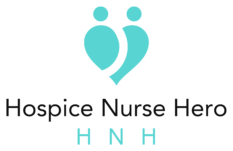Do you find yourself spending more time on charting than with your loved ones? Has your dedication to your hospice role affected your work-life balance? You’re not alone. If you’re a hospice nurse who loves their job but struggles with organization, fret not. Regaining control, improving efficiency, and finishing your charting on time are possible. In this guide, we’ll explore tips and strategies, suitable for both seasoned and new nurses, to enhance your hospice documentation process.
The Struggle is Real:
Many hospice nurses, even experienced ones, may feel overwhelmed with charting responsibilities. Missed family events and an ever-growing to-do list can lead to frustration. However, making a few small changes can significantly impact your effectiveness and efficiency.
The struggle I see most often is that hospice documentation is complex, and involves a form of charting known as “negative charting” that most nurses are not familiar with.
This involves capturing the disease-specific changes that the patient is experiencing to support their continued eligibility for hospice.
When it comes to charting, you might wonder what you can do to become more efficient and organized. My #1 piece of advice is to document at the bedside while things are fresh. I’d also highly suggest that you use checklists to keep yourself organized.
Understanding the Significance of Hospice Documentation
First, charting isn’t just a routine task; it’s a window into the patient’s journey. It allows us to track changes, assess symptoms, and provide the best possible care.
Second, charting the decline of your hospice patient is critical to ensuring that they meet the rigorous, regulatory requirements set by Medicare. Hospice documentation must demonstrate why the patient is enrolled in hospice.
RECOMMENDED ARTICLE: 3 Common Mistakes Hospice Nurses Make and How To Avoid Them
Benefits of Timely Charting:
Charting on time offers a multitude of benefits:
- Decreases Stress
- helps you stay on schedule
- Enables you to finish earlier
- Eliminates the need to chart at home

Simple Charting Hacks:
1. Prep Before Your Visit:
You should start your day by knowing what type of visits you are making for the day, and organizing what you need to ensure you have the tools you need. For Instance, if you are completing a recertification visit, you will want to make sure you bring a measuring tape to capture the Mid-upper arm circumference (MUAC) of your patient.
You should also check the chart and record what the patient’s objective measurements were at admission or during their last certification period. This will save you time when you are preparing for hospice IDG meetings.
This proactive approach can save valuable time during patient visits.
2. Document at the Bedside
You knew this was coming! 😊
Maximize your time by documenting while you are still in the patient’s home. By completing as much documentation as possible, you can prevent tasks from piling up. This is a great strategy and opportunity for you to streamline your workflow.
For instance, you can block the last 15 minutes of your routine home visit to review medications and supplies and call the doctor. While you are waiting on return calls, you can open your charts and make sure you don’t miss any crucial documentation requirements.
3. Simplify Your Care Plan
This one is a biggie. You don’t have to include every problem that the patient has on their care plan. Remember, this is hospice and we are not going to fix everything.
Your top priorities are pain and symptom management, so start there.
Streamlining your care plan not only saves time but also ensures clarity and relevance.
4. Allocate Time for Documentation
Now, you might think you don’t have time, but I can assure you that you do!
Set aside time to document and build it into your visit. For example, if you know you have IDG coming up, pick a day when you see fewer patients and block off administrative time. This might be difficult at first, and it will require some discipline on your part, but it is well worth it in the long run.
💡Using checklists can also ensure you have everything you need to start charting in one place.
This type of proactive planning can keep you from getting too far behind.
5. Use a Consistent Charting Style
Using the same charting style each visit, aided by checklists and timing, can establish a rhythm, making the process more efficient.
For example, you can use a nursing narrative template to get yourself used to documenting decline.
Speed Up the Process:
Find a Quiet Place to Sit
Optimize your environment for focused charting. A quiet space can help you concentrate on your tasks, allowing you to complete them faster. For instance, if you are seeing patients in the nursing home, you can ask for a spot at the nurses’ station or in an empty nook to chart. This will allow you to be seen by the staff and if anything comes up, or you miss anything. This is also a great way to build relationships with the nursing home facility staff.
Utilize EHR and Keyboard Shortcuts
Familiarize yourself with your Electronic Health Records (EHR) system and leverage keyboard shortcuts. Memorizing the order of your EMR and using shortcuts can expedite the charting process.
Conclusion:
By implementing these hospice documentation tips, you can regain control of your time, decrease stress, and enhance your overall efficiency. Remember, good charting habits are the key to spending less time charting and more time doing what you love—providing compassionate care to your patients.

